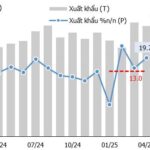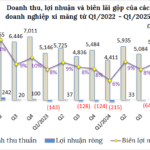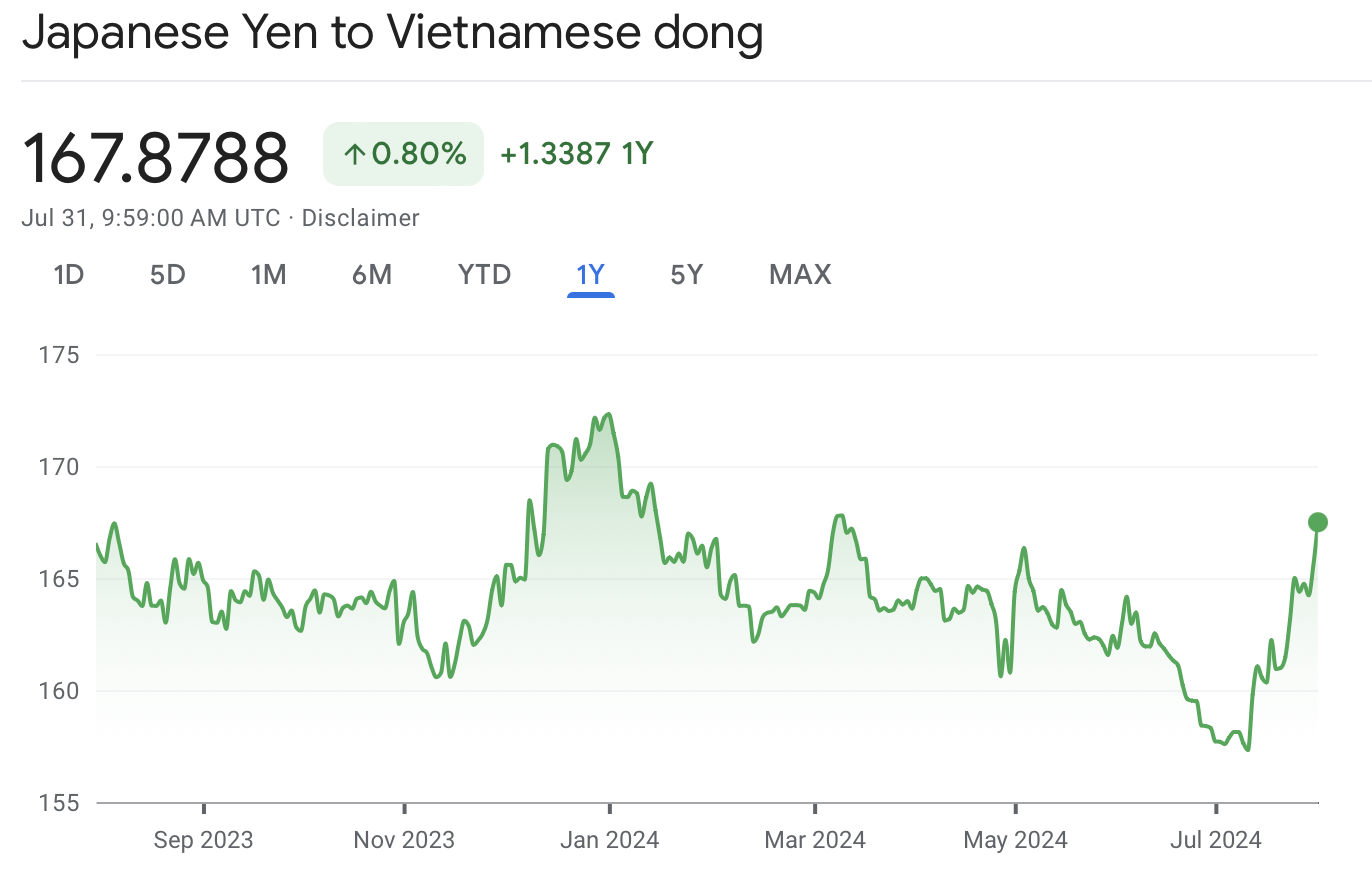Export growth may decelerate
According to KIS Securities, the Vietnamese economy experienced significant fluctuations due to the pandemic during 2021-2024. The main growth driver during these years remained exports, led by FDI enterprises. Thanks to its deep integration into global supply chains, Vietnam’s merchandise exports continuously broke records and made important contributions to GDP growth. In 2024, total export turnover reached approximately $405 billion, up more than 14% from 2023. This breakthrough increase helped Vietnam’s GDP grow by 7.09%.
Exports not only bring foreign currency and trade surplus (Vietnam has maintained a trade surplus from 2018 up to now) but also boost industrial production. Export growth usually goes hand in hand with increased industrial production in the manufacturing sector. In 2024, when merchandise exports surged by +14%, the industrial production index (IIP) of the whole country also increased by 8.4%, reflecting the strong recovery of the manufacturing sector. Localities with large export turnover such as Bac Ninh, Thai Nguyen, Binh Duong, and Ho Chi Minh City, etc., all achieved high GRDP growth, thanks to the complex of FDI enterprises (Samsung, Foxconn, Nike, etc.).
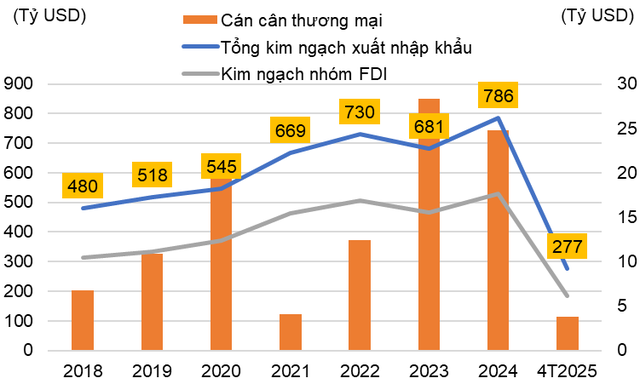
Chart 1: Exports over the years. Source: GSO, KIS
However, the high dependence on exports also makes Vietnam vulnerable to external shocks. When global demand slowed down in 2023 due to high inflation and global monetary tightening, export orders of Vietnamese factories decreased. In addition, KIS Securities also noticed that the tax policies of President Trump at present also create significant pressure on global growth in general and Vietnam in particular. Accordingly, after the US announced that it would impose a 46% tax on imports from Vietnam, this has created a negative psychology as the economic growth prospects may slow down significantly. Although the US has postponed the tax imposition to create room for negotiations, the risks related to tariffs remain quite large.
These risks serve as a warning that economic growth relying solely on exports may not be sustainable when the global economic cycle turns downward. In this context, Vietnam is forced to consider diversifying its growth drivers and reducing its dependence on pure exports. This is the reason for the emergence of new orientations in recent years, focusing more on the domestic market.
Internal strength will boost growth
In the face of risks and the slowdown of the export sector, KIS Securities believes that internal factors will drive growth in the coming period. Specifically, two focused drivers are public investment (especially infrastructure development) and boosting domestic consumption through fiscal and monetary supportive policies. The aim is to compensate for the decline in exports, maintain economic growth momentum, and create a foundation for more sustainable development.
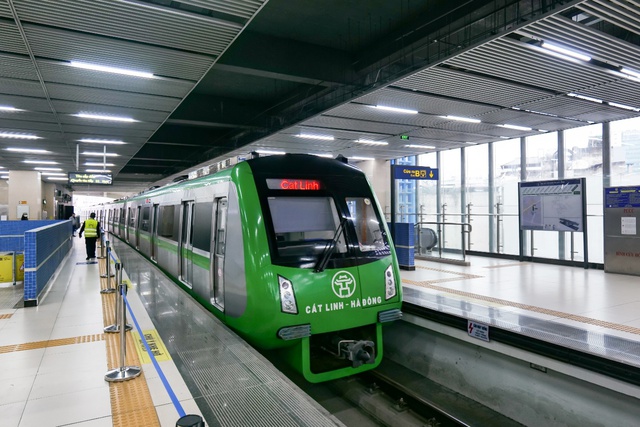
Promoting public investment and infrastructure development become the focus of the economic development strategy
Promoting public investment and infrastructure development have become the focus of the economic development strategy, as the scale of budget capital for development investment has continuously increased. Investment capital from the budget plan for 2025 is nearly VND 900 trillion, a sharp increase compared to the 2024 plan (about VND 780 trillion) and the actual expenditure in 2024 (about VND 660 trillion).
A series of infrastructure projects have been implemented, such as Hanoi Ring Road 4, Ho Chi Minh City Ring Road 3, which have been expedited; the Long Thanh International Airport (Dong Nai) project is also being accelerated. The impact of public investment has played a role to some extent, becoming a pillar for growth. In addition, KIS Securities also finds that efficient public investment also has a “leading” effect on private and FDI investment, as better infrastructure helps reduce business costs. Therefore, prioritizing infrastructure will support short-term growth while creating a premise for a new growth cycle in the future.
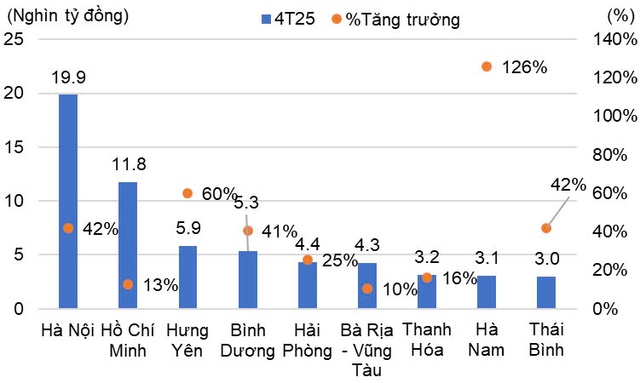
Chart 2: Capital investment from the state budget in the first 4 months of 2025. Source: GSO, KIS
In addition, according to KIS Securities, another growth driver could come from domestic consumption and supportive policies. Specifically, in parallel with public investment, Vietnam has implemented many fiscal and monetary policies to stimulate domestic aggregate demand, especially household consumption and private investment. A series of policies have been implemented, such as reducing 2% of value-added tax (VAT), supporting interest rates for businesses and business households, etc.
Thanks to these policies, domestic consumption has recovered significantly after Covid-19, with retail sales in the first four months of 2025 increasing by nearly 10% compared to the same period in 2024. This is a significant recovery compared to 2024. Therefore, it can be said that domestic consumption is gradually becoming an important growth driver.
With the change in the factors driving the economy as of now, KIS Securities believes that the Vietnamese economy can create sustainable growth momentum in the coming period.
The Consumer-Retail Business: Actualizing the Spirit of Resolution 68-NQ/TW
Amidst the backdrop of Resolution 68/NQ-TW, which emphasizes the formation and development of large private economic groups with competitive regional capabilities, as initiated by the Government, Masan Group Corporation (HOSE: MSN) is poised to lead the way as a key player in the private sector. With a sharp focus on the domestic market, Masan Group is well-positioned to become one of the powerhouse conglomerates, deeply integrated into both local and international value chains.
“Six Developers, Zero Disbursement”
Despite favorable conditions, the disbursement of public investment capital in Dak Nong has been low. Alarmingly, six investors have failed to disburse any public investment funds, resulting in a zero-dong disbursement figure.
“Nationwide Commemoration: 80 Mega Projects to Mark 80 Years of Independence”
On the recent 50th anniversary of the liberation of the South and the reunification of the country, 80 major and key projects and programs were inaugurated and launched nationwide. Similarly, on the upcoming 80th anniversary of National Day, the country will continue to inaugurate and launch another 80 significant projects and programs.



